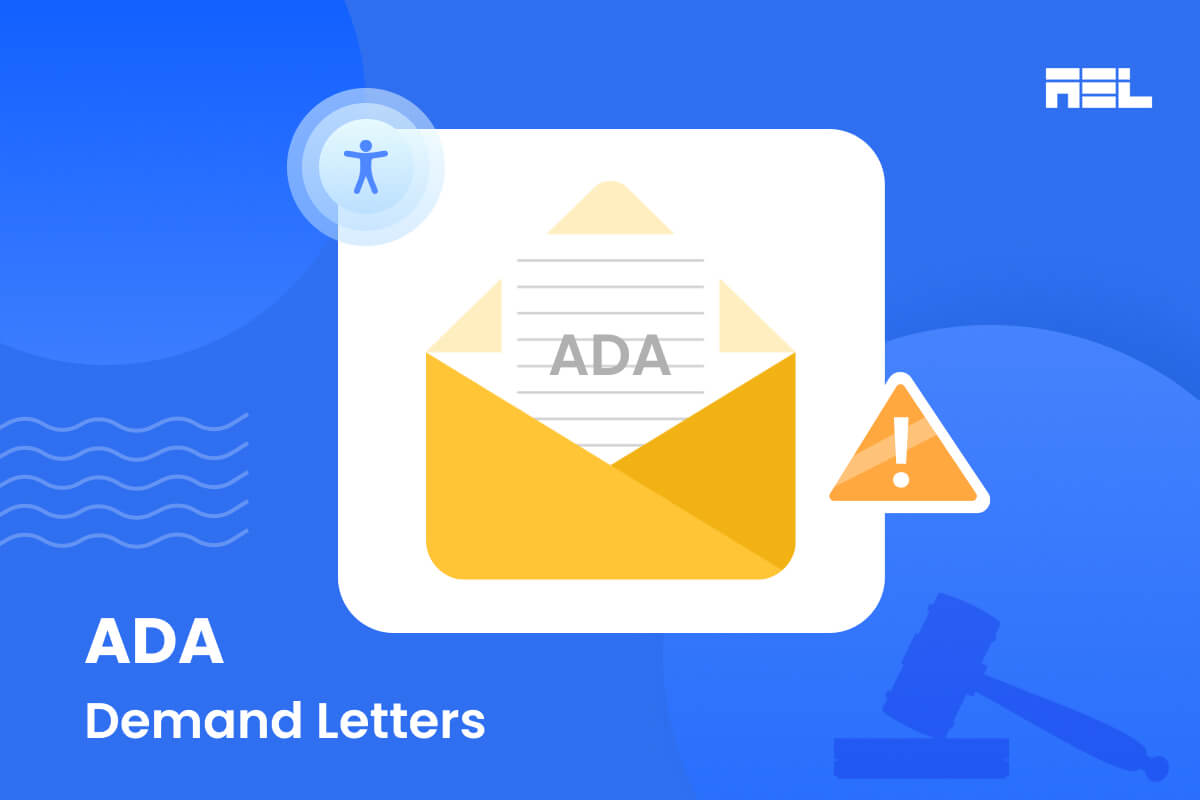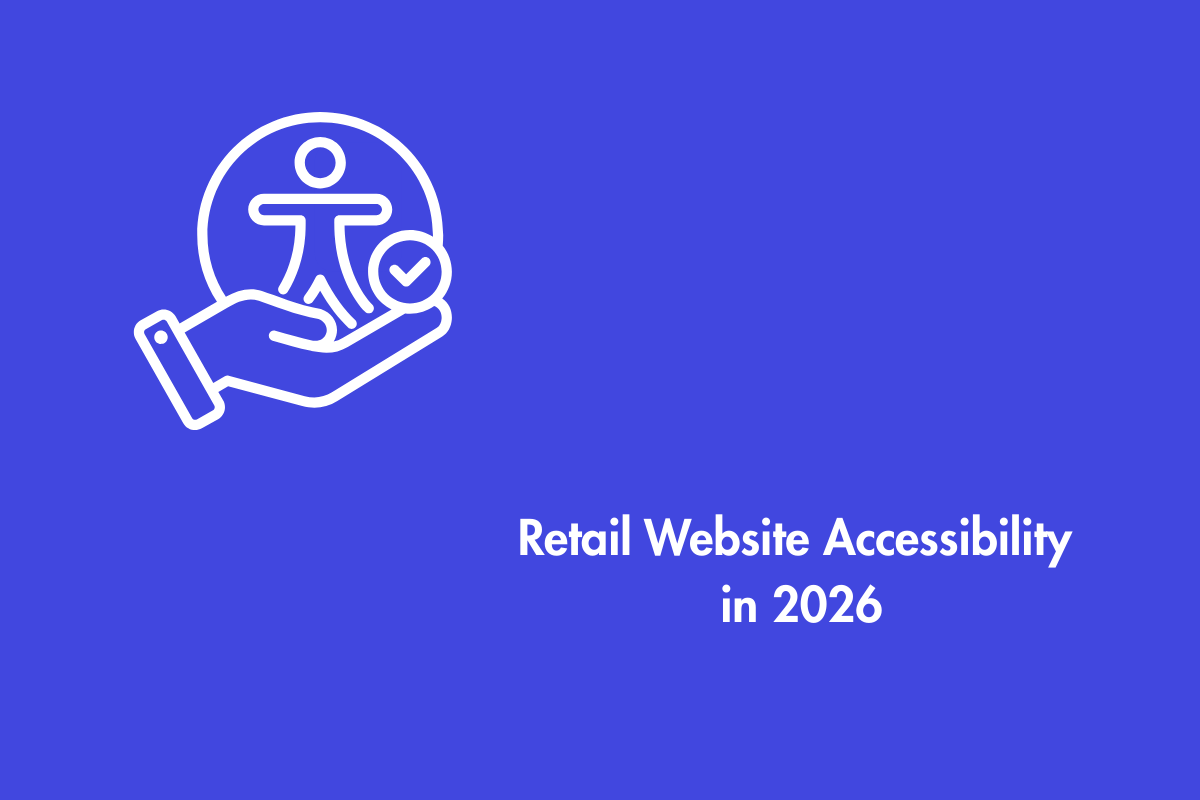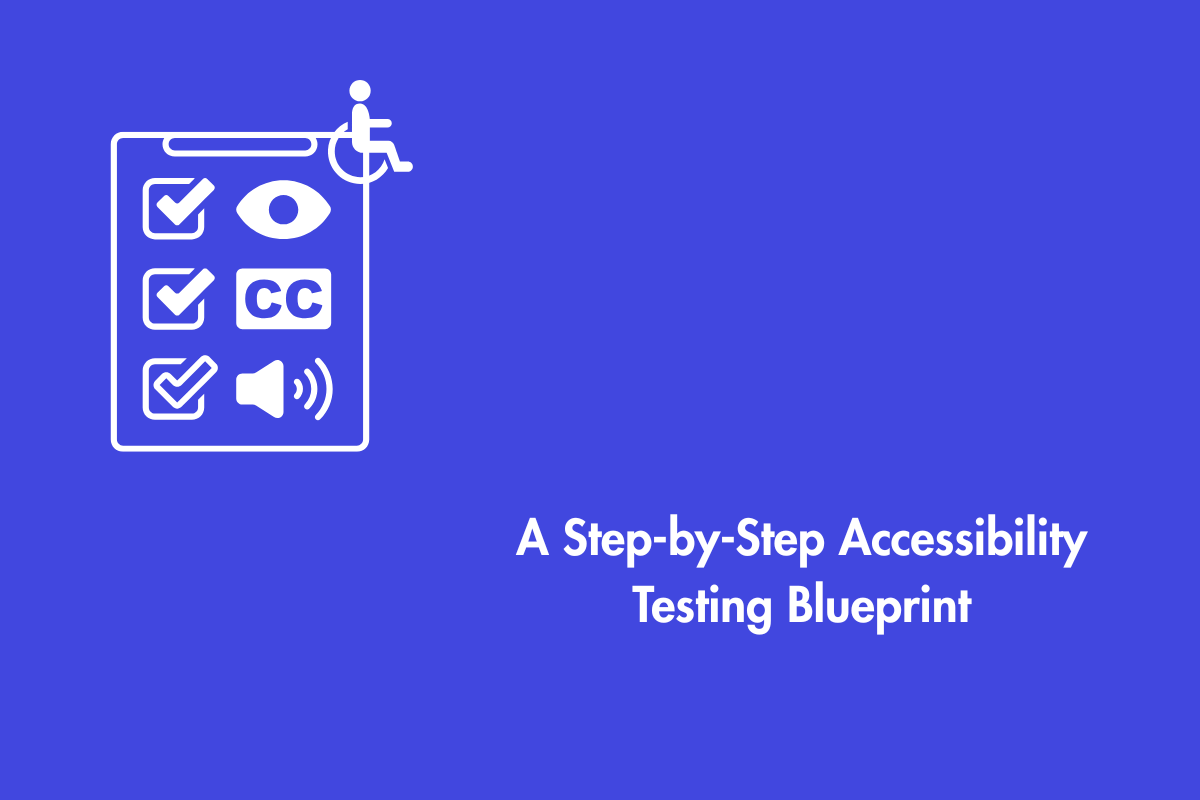Demand letters related to website accessibility have become so common that many law firms are offering courses to help understand and respond to them. ADA demand letters, as the name suggests, are sent to organizations that do not comply with the regulations.
This includes:
- Discriminating against people with disabilities and not providing them equal access opportunities.
- Failure to meet technical standards leads to your websites and apps being inaccessible to assistive technology.
The ADA aims to ensure equal access for all, and thus an increase in legal actions related to digital accessibility. Businesses need to be proactive in addressing these letters to prevent future issues. In this article, we will explore the various topics related to ADA demand letters.
Table of Contents
- 1 What are ADA Demand Letters?
- 2 Rise in ADA Digital Accessibility Lawsuits
- 3 What to Do When You Get an ADA Demand Letter?
- 4 What does an ADA Demand letter look like?
- 5 Response to an ADA Demand Letter:
- 6 Measures to Prevent Future ADA Demand Letters
- 7 Benefits of a Proactive Accessibility Approach
- 8 How Professional Accessibility Audits Can Help You
- 9 Choosing a Qualified Accessibility Auditor
- 10 Wrapping up
What are ADA Demand Letters?
An attorney or individual with a disability sends an ADA demand letter, a formal document alleging that the website or mobile application of a business lacks accessibility. Consequently, this alleged noncompliance violates Title III provisions of the ADA. It mandates all public accommodation spaces including websites and applications to be accessible for individuals with disabilities.
Typically, the demand letter specifies particular accessibility barriers faced according to WCAG or other standards on accessibility and requires corrective action within an established timeframe. Non-compliance may precipitate a lawsuit: an outcome that incurs significant costs and detrimentally impacts the reputation of any organization.
Rise in ADA Digital Accessibility Lawsuits
The number of ADA lawsuits related to digital accessibility has significantly increased in recent years. This can be attributed to several factors such as:
- Awareness: Public awareness of online accessibility rights is increasing. It leads to more people seeking legal recourse when they encounter barriers.
- Accessibility Testing Tools: These tools help in easily identifying a lot of issues although it still needs manual intervention to find all accessibility issues on the website.
- Profit: Unfortunately, some individuals or firms see ADA violations as an opportunity for financial gain through litigation. This highlights the importance of addressing accessibility issues proactively to avoid potential exploitation.
What to Do When You Get an ADA Demand Letter?
Here’s a step-by-step approach to navigate the situation:
- Seek Legal Counsel: Firstly relax, you don’t need to panic and mainly just don’t ignore the letter. Approach a lawyer experienced in technology and disability law, who can analyze and advise you on the best path to move forward.
- Evaluate Accessibility: Conduct a thorough accessibility audit of your website and application to identify specific barriers and prioritize the remediation process accordingly.
- Respond to the Demand Letter: Draft a well-considered response within the stipulated timeframe with the help of your lawyer. Remember to be polite and demonstrate good faith efforts to resolve the issue.
What does an ADA Demand letter look like?
A typical demand letter regarding ADA website compliance typically consists of the following sections: Please note that this description is provided for informational purposes only and should not be construed as legal advice.
Introduction:
The letter begins with a statement of purpose, asserting that the recipient is in violation of the ADA and requesting changes to ensure compliance.
Violation Details:
Further details about the violations are provided to help the recipient understand the necessary actions to adhere to ADA guidelines. This may involve detailed descriptions of accessibility barriers, such as issues with keyboard navigation or compatibility with screen reader technology.
Request for Modifications:
This section clearly outlines the specific changes the sender is requesting, such as adding alternative text to images or providing captions for videos.
Timeline for Compliance:
The sender specifies a reasonable timeframe for the recipient to implement the requested modifications, which can vary depending on the complexity of the changes needed.
Consequences of Non-Compliance:
The potential consequences of failing to meet the demands are discussed by the sender.
Conclusion:
The letter concludes with a summary of the demands and a restatement of the sender’s request for accommodations.
Response to an ADA Demand Letter:
A well-crafted response to an ADA demand letter should include:
- Acknowledgment and commitment: The organization acknowledges receipt of the demand letter and expresses its commitment to accessibility, ensuring equal access for all users.
- Remediation and communication: The plan should clearly outline and communicate the steps to address accessibility barriers, including implementation timelines and allocated resources.
Measures to Prevent Future ADA Demand Letters
Organizations must mitigate the risk of receiving ADA demand letters and foster a more inclusive digital experience by formulating an explicit accessibility policy. Investing in accessibility training, conducting routine audits, utilizing automated testing tools, and featuring an accessible statement on their website are imperative steps towards this goal.
The formal policy needs to delineate objectives and have compliance benchmarks as well as protocols for tackling any emerging accessibility issues. These elements will serve as guideposts throughout the process.
By educating our development team about web access best practices along with WCAG standards, we equip them with knowledge that empowers the construction of accessible websites or applications.
Thus serving not just legal requirements but also users’ needs effectively. Scheduling regular audits allows for the identification and addressing of potential issues before they transform into legal problems.
While automated testing tools prove effective in recognizing and rectifying basic accessibility barriers, it’s crucial not to substitute them for manual tests conducted with actual users.
Benefits of a Proactive Accessibility Approach
Adopting a proactive stance towards accessibility not only diminishes legal risks but also amplifies brand reputation, enhances user experience, and broadens the audience. This widening potential augments your customer base and extends your market reach significantly.
Websites boasting accessibility transcend ability boundaries, offer an enriched experience for all visitors including those with disabilities. Moreover, aligning with SEO best practices ensures higher ranking in search engine results pages which consequently drives up organic traffic.
How Professional Accessibility Audits Can Help You
Here’s how it can benefit your organization:
- Identifying and developing a roadmap: Professional accessibility audits detect accessibility barriers early, preventing legal liabilities or hindering user experience. They also provide a clear compliance roadmap that gives you a clear idea of how to allocate resources according to their priority.
- Improved User Experience: Accessibility and user experience go hand-in-hand therefore in the end you will have a user-friendly product.
- Legal Protection: A well-documented accessibility audit helps you to avoid lawsuits as it demonstrates a commitment to compliance if there is a lawsuit.
Choosing a Qualified Accessibility Auditor
When selecting a professional accessibility auditor, consider the following factors:
- Experience and expertise: Ensure an auditor with a proven track record in conducting accessibility audits for various website and application types and a deep understanding of WCAG guidelines and other relevant accessibility standards.
- Methodology: Select an auditor who employs a confluence of both automated and manual testing tools. An auditor whose team involves users with disabilities as it can help in creating an inclusive website would be ideal.
- Communication: Choose an auditor who excels in communication as it benefits everyone involved in the process.
Wrapping up
Understanding and handling demand letters is crucial for business owners, as these can trigger legal issues. Mitigating these risks requires businesses to enhance the accessibility of their websites and applications; an accessibility plan must be implemented: this not only evidences a firm’s commitment towards inclusion but also underpins its social responsibility–both indispensable facets at graduate level study in business management.
Businesses can mitigate legal risks, enhance user experience, and foster a more inclusive digital environment for all by taking action, responding to ADA demand letters, and implementing robust accessibility strategies.



